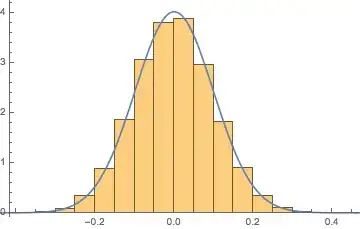I am estimating a zero/one inflated beta regression model with gamlss (family BEINF). My dependent variable is [0,1] with a lot of 0s, quite some 1s, and some values in between. This means I assume that my model consists of three submodels:
Reference formula: Rigby & Stasinopoulos (2010), A Flexible regression approach using GAMLSS in R, section 10.8.2, p 215.
With regard to link functions used, this source gives a nice table (see BEINF)
In R, the coefficients of these submodels are addressed by Nu (zero-probability), Mu and Tau (one-probability)?
gam<-gamlss(y_proportion ~ x1+x2, nu.formula=~x1+x2, tau.formula=~x1+x2, family= BEINF,data=Alldata)
### find raw probabilities
prob.of.0.raw <- predict(gam, what="nu", type="response")
prob.of.1.raw <- predict(gam, what = "tau", type = "response")
prob.of.mu <- predict(gam, what="mu", type="response")[1]
My question is related to Mu. What exactly is this?
- Some people tell me this is the "mean". But do they mean the "mean" of the entire model (all three of them together) and is it therefore comparable with mean(y).
- Or is it only the mean of the middle model (and is it therefore not taking into account 0 and 1)? I am assuming it is the last answer but I am confused. Thanks for your help!

